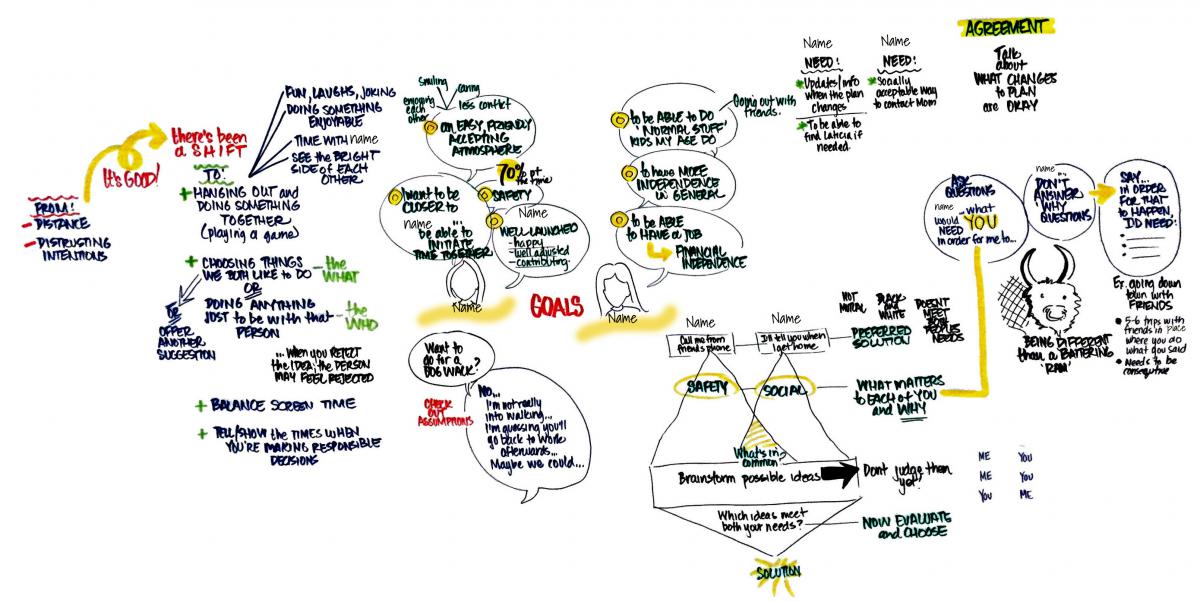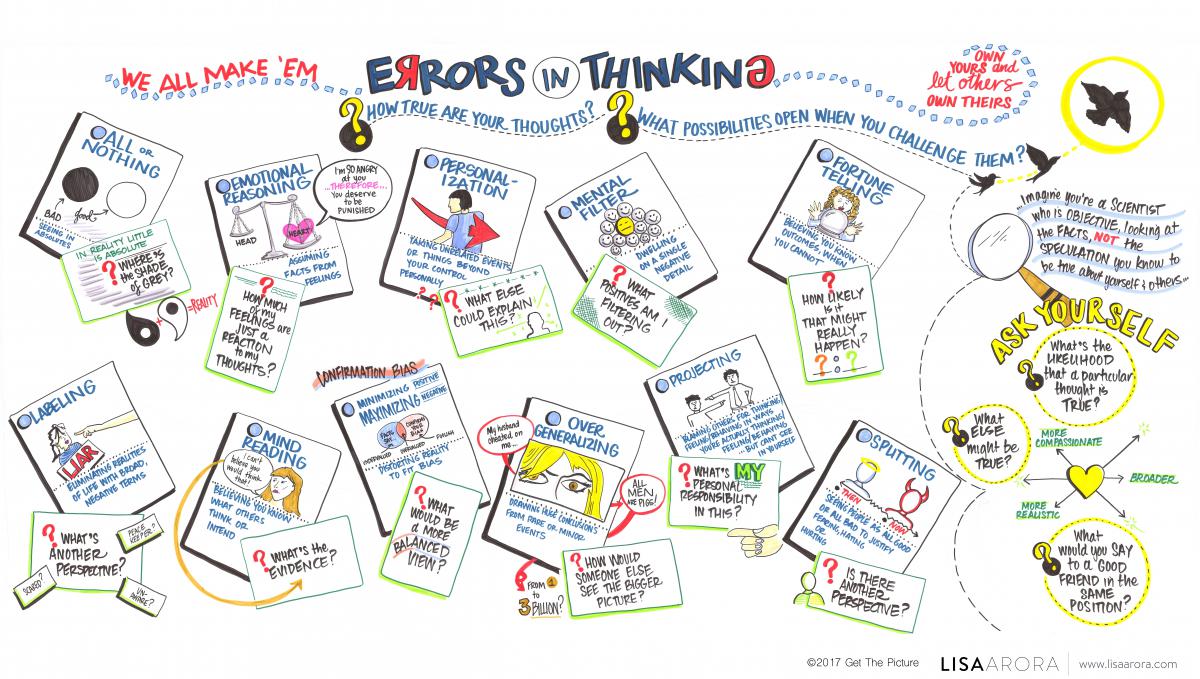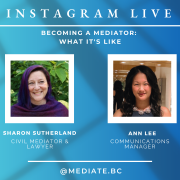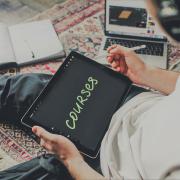Tue 21 Feb 2017
Leveraging the Power of Visual Communication in Mediation
Posted by Heverton.Oliveira
Visual mediation is the practice of using graphics to explain and guide people through the process of mediation.
During sessions, one or more mediators who are trained in visual communication skills captures key parts of the parties’ ideas and expressions on large paper. This gives clients the ability to work tangibly with their information to make sense and solve problems.
This emerging, innovative mediation technique originated in Victoria and is being applied in family mediation.
How does visual mediation help resolve conflict?
As Stanford University futurist Paul Saffo says, “paper is the brain’s interface.” When we work visually on paper in mediation, it can:
- Simplify and empower fast communication
- Drive engagement and unity
- Help track and gather insights
- Enable a shift from conflict to resolution
- Increase mediator transparency and accountability
Tamika and Sarah: A Case Study
Tamika (an adoptive parent of her teen daughter Sarah) came to mediation deeply wounded by a long history of complex relationship and individual issues, including attachment issues, grief and loss, trauma and family dynamics. The sessions occurred in multiple meetings that we (Kat and Lisa) co-mediated using visual communication methods with a facilitative, interest-based, trauma-informed approach.
During different stages of the mediation, we used a variety of visual methods, including: visual templates, live visual mapping, information presentation graphics and informal “doodling” on the table top.
How we used visual templates
We prepared a visual agenda template in advance and captured information into it to help set the structure for the mediation. The template included a stormy seas and iceberg metaphor that represented the conflict the parties faced. At the start of the joint sessions, we elicited from Tamika and Sarah and captured on the template their goals for mediation, discussion topics, and agreements on “how we work in mediation.” Working with the parties to populate all the categories on the template ensured that we covered stage 1 and 2 fundamentals of mediation.
We found that the iceberg metaphor became a tool to help both mother and daughter to understand the value of getting beneath positions to consider underlying interests and needs. Throughout our multiple sessions, the visual also enabled us to easily re-acquaint Tamika and Sarah with process agreements and add to or re-negotiate them. Plus, because the agreements remained visible during sessions, they provided a silent yet constant reminder for everyone.
This visuals included here have names, identifiers and content elicited from the parties removed to protect confidentiality.

How we used live visual mapping
While one mediator primarily led the discussion, the other visually recorded key parts of each joint mediation session in real-time on 4’ x 8’ sheets of paper. The recording mediator filtered the dialogue in order to map information that was future-focused and would support conflict resolution.
The resulting graphics included:
- Parties’ mutual goals and individual needs for a more productive relationship
- Metaphors of ineffective behavioral dynamics paired with suggestions on how to communicate differently
- Vignettes of actual conflicts and ideas on how similar scenarios could be handled differently in the future
- Communication and negotiation strategies introduced by the mediators
- Accounts of Tamika and Sarah’s progress over time and what was working in the relationship
After each session, Sarah and Tamika received an electronic version of the map that we suggested they print out to keep in daily sight.
Key observations from using visual mediation:
- Sarah, who struggles with attention, was able to stay engaged for up to 3 hours at a time.
- We could use the maps to engage the parties in reflecting on their own agreements, while identifying and filling gaps to strengthen them.
- Tamika and Sarah could confirm what each other said and see what we as the mediators understood.
- The maps also functioned as a review tool in preparing for next sessions.

How we used information graphics
In an individual session with Tamika, we created an information graphic ahead of time, which displayed common errors in thinking. The map was posted in the room when she arrived and became an integral part of the session.
What we noticed:
- Tamika was engaged with the content on the chart the moment she walked in the door and by her own initiative began to self-reflect on her own tendencies.
- The errors in thinking could be “viewed” quickly and understood, rather than delivered by lengthy explanation, so more of the session was devoted to understanding how these applied to her role in the conflicts.
- We were able to refer to the information on the chart throughout the session to grow awareness of patterns that perpetuate conflict in the parent-teen relationship.

Essential Practices for Visual Mediation
As we develop visual mediation strategies, we’re actively engaged in ensuring that they align with practice standards. To that point, we believe:
- Use of the visual maps created in mediation must be included in the confidentiality agreement.
- Parties must be properly oriented to visual mediation, including assuring them it’s okay to suggest changes to what’s written on the map if it doesn’t accurately represent what they meant.
- Participants must see the map, not as a piece of art that would be ruined by suggesting a change to it, but as a non-precious, neutral space to make shared meaning upon.
- The mediator who is capturing must understand the nuances of mediation in order to apply a selective filter in deciding what content makes it onto the map.
As in all mediation, the general rule of thumb is to focus on content that supports the desired outcome for the mutual benefit of both parties.
In closing
Using a variety of visual methods at different stages of the mediation helped guide Tamika and Sarah to a better understanding of each other and open pathways to effective communication and improved conflict resolution. The maps reflected the unique, individual circumstances of their family and promote ownership of agreements because they are the parties’ own words and images.
The highly collaborative process of working visually shifted their focus from one another to creating something together. This helped them remain solution and future focused and become less triggered by the problems and history they share.
Talk with us!
How have you been using visual aids in mediation? What situations do you find them most helpful with? What sort of benefits or challenges have you seen from using visual aids?
To learn more about visual mediation, visit our websites LisaArora.com and KatBellamano.com.
 Lisa Arora, B.Ed., FMC cert. CFM, is an internationally recognized expert in the field of graphic facilitation and a comprehensive family mediator who uses visuals to enhance communication and foster productive, mutually beneficial agreements during mediation.
Lisa Arora, B.Ed., FMC cert. CFM, is an internationally recognized expert in the field of graphic facilitation and a comprehensive family mediator who uses visuals to enhance communication and foster productive, mutually beneficial agreements during mediation.
 Kat Bellamano, BSW, RSW, FMC cert. CFM, is a family dispute resolution specialist and a registered social worker providing mediation, parenting coordination and child interviewing. She has been working with families in stress and conflict for almost 15 years and specializes in working with high conflict and complex needs.
Kat Bellamano, BSW, RSW, FMC cert. CFM, is a family dispute resolution specialist and a registered social worker providing mediation, parenting coordination and child interviewing. She has been working with families in stress and conflict for almost 15 years and specializes in working with high conflict and complex needs.




